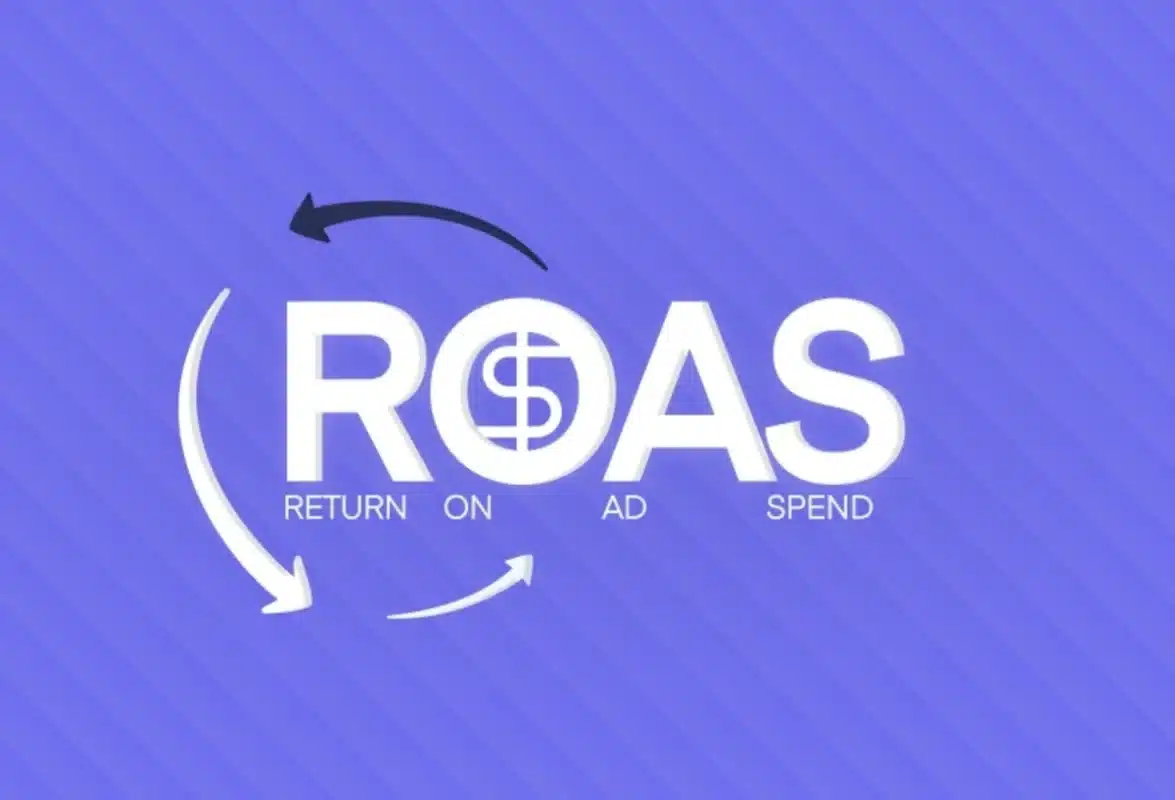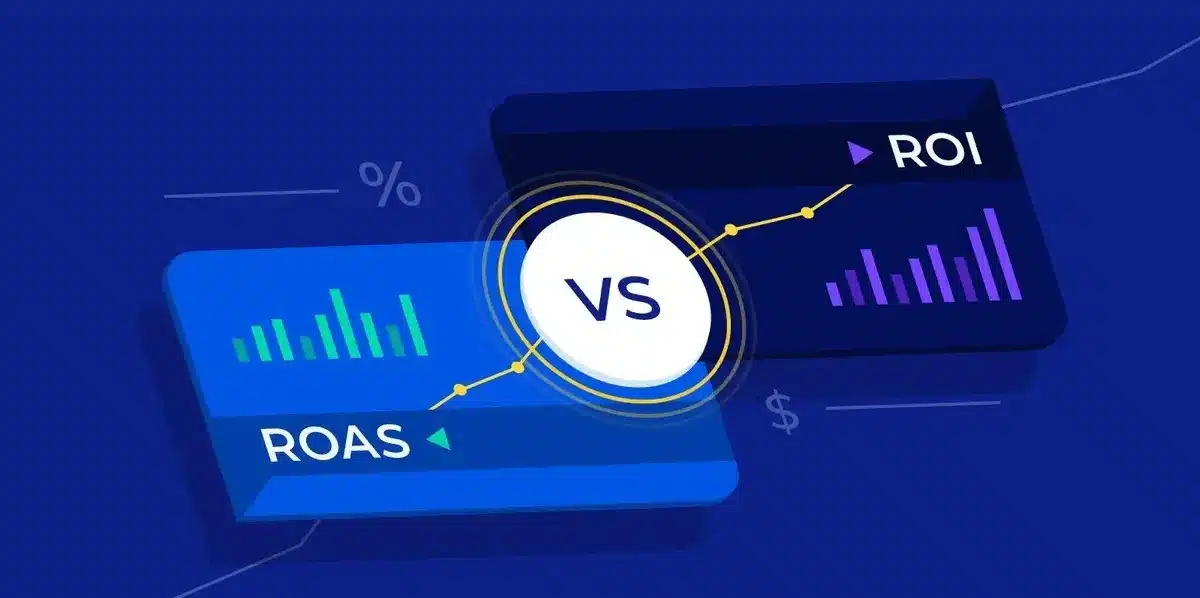What is a Good ROAS for Ecommerce?

In the fast-paced world of eCommerce, every dollar spent on advertising must count.
But what is a good ROAS for eCommerce? Is there a common baseline, or does it differ between industries and company models?
In this blog, we’ll dig deeply into ROAS, its importance in eCommerce, the elements determining what makes up a successful ROAS, and strategies for optimizing it in your online store.
Whether you’re a seasoned eCommerce expert or just getting started, understanding what is a good ROAS for eCommerce is essential for making informed decisions that generate profitability.
Table of Contents
What Exactly is ROAS?

Return on Ad Spend (ROAS) is a key measure in digital marketing that measures an advertising campaign’s effectiveness.
ROAS measures the revenue gained for every dollar spent on advertising. It is determined by dividing total ad revenue by total ad spend.
In essence, ROAS shows how effectively your advertising investments are paying off.
A higher ROAS suggests a more profitable campaign because your advertising generates more income than it costs.
On the other hand, A lower ROAS indicates that your advertising efforts may be ineffective, necessitating strategy changes.
Understanding what is a good ROAS for eCommerce is vital for any online business that aims to optimize its marketing budget and maximize profitability.
By regularly monitoring and analyzing ROAS, companies can make informed decisions about where to allocate their advertising dollars, ensuring their marketing efforts are efficient and effective.
What is a Good ROAS for Ecommerce?

Determining what is a good ROAS for eCommerce can vary widely depending on several factors, including the industry, business model, and specific goals of the advertising campaign.
However, A good Return on Ad Spend (ROAS) for eCommerce businesses ranges between 1.1 and 3 or more, depending on the industry and competitive environment.
This means that for every dollar spent on advertising, the company should expect to receive between 1.1 and 3 dollars in sales revenue (not profit).
How Is ROAS Calculated?
Return on Ad Spend (ROAS) is a straightforward yet powerful metric that helps eCommerce platforms measure the effectiveness of their advertising campaigns.
To understand the question of what is a good ROAS for eCommerce, it’s important to know how to calculate it.
ROAS Formula:
ROAS = Total Revenue Generated from Ads / Total Amount Spent on Ads
Here’s a step-by-step guide to calculating ROAS:
- Determine the Total Revenue Generated from Ads: Your ads’ total revenue. You can usually find this figure in your eCommerce platform’s analytics or your advertising platform’s reporting tools.
- Calculate the Total Amount Spent on Ads: This is the total expenditure on your advertising campaigns, including all costs associated with your ads, such as cost-per-click (CPC) or cost-per-impression (CPM) charges.
- Apply the ROAS Formula: Divide the total revenue generated from ads by the total amount spent on ads. The result is your ROAS.
For Example:
If your eCommerce store generated $10,000 in revenue from a $2,000 ad spend, your ROAS would be:
ROAS = $10,000 / $2,000 = 5
This means that for every dollar spent on advertising, you earned $5 in revenue.
Understanding and calculating ROAS is crucial for determining what is a good ROAS for eCommerce, enabling businesses to optimize their marketing strategies and enhance their return on investment.
How to Improve ROAS for an Ecommerce Store
Improving Return on Ad Spend (ROAS) for your eCommerce store involves strategic planning, optimization, and continuous refinement of your advertising efforts.
Here are effective strategies to boost your ROAS:
- Targeted Audience Segmentation: Identify and target specific customer segments likely to convert. Use data analytics and customer insights to refine your audience targeting.
- Optimize Ad Creatives and Copy: Create compelling ad creatives that resonate with your target audience. Test different ad copy variations, images, and calls to action to identify what performs best.
- Leverage Retargeting Campaigns: Implement retargeting ads to re-engage visitors who have shown interest in your products but haven’t converted yet. Personalize your messaging to encourage them to complete their purchase.
- Use Conversion Rate Optimization (CRO) Techniques: Improve the website’s user experience (UX) and simplify the checkout process to reduce abandonment rates. A smoother customer journey can increase conversion rates and improve ROAS.
- Monitor and Adjust Bidding Strategies: Monitor your advertising campaigns and adjust bidding strategies based on performance metrics. Allocate budget to high-performing campaigns and keywords to maximize ROI.
- Utilize Data-Driven Insights: Analyze performance metrics such as click-through rates (CTR), conversion rates, and cost-per-acquisition (CPA) to make data-driven decisions. Optimize campaigns based on insights to improve ROAS over time.
- Implement A/B Testing: Conduct A/B tests for different aspects of your campaigns, including ad formats, landing pages, and audience targeting. Use results to optimize for higher ROAS.
- Focus on Lifetime Value (LTV): Consider the long-term value of customers when evaluating ROAS. Invest in campaigns that attract loyal customers likely to repeat purchases, increasing overall profitability.
- Stay Updated with Industry Trends: Keep up with changes in digital marketing platforms and industry trends. Adapt your strategies to leverage new features and technologies to enhance campaign performance.
- Seek Professional Assistance: Consult with digital marketing experts or agencies specializing in eCommerce. Their expertise can provide valuable insights and strategies to improve ROAS effectively.
By implementing these strategies and consistently optimizing your advertising efforts, you can enhance ROAS for your eCommerce store, drive higher revenue, and achieve sustainable growth in the competitive online marketplace.
What Is The Difference Between ROAS and ROI?

Understanding the difference between ROAS (Return on Ad Spend) and ROI (Return on Investment) is crucial when analyzing the effectiveness of your marketing initiatives and overall business investments.
Both parameters measure business performance but address different factors and serve other objectives.
Understanding these distinctions is critical when determining what is a good ROAS for eCommerce?
1. ROAS (Return on Ad Spend)
ROAS precisely measures the revenue gained by campaigns compared to the amount spent on those ads.
It provides an in-depth evaluation of the success of your ad campaigns, which is essential when determining what is a good ROAS for eCommerce.
Purpose
- To evaluate the performance of specific advertising campaigns.
- To determine the immediate revenue return for every dollar spent on ads.
- Optimize ad spend by identifying which campaigns are most effective.
2. ROI (Return on Investment)
ROI, on the other hand, analyses an investment’s overall profitability while accounting for all associated costs and revenues. It offers a broader analysis of the financial return on all forms of investments, not only advertising.
Purpose
- To assess the profitability of an investment or project.
- To compare the efficiency of different investments.
- To make informed decisions about resource allocation.
Conclusion
Determining what is a good ROAS for eCommerce requires balancing several factors, including industry standards, business goals, and profit margins.
While there isn’t a one-size-fits-all solution, aiming for a ROAS that exceeds your break-even point is usually a good sign of success.
Throughout this blog, we’ve looked at how ROAS (Return on Ad Spend) is an essential indicator for measuring the efficacy of eCommerce advertising.
It provides valuable information about which initiatives drive revenue and which may require change.
eCommerce enterprises can improve their marketing efficiency, maximize income, and achieve long-term growth by frequently evaluating ROAS and optimizing advertising.
FAQs
What are some common challenges in achieving a high ROAS?
Common challenges include stiff competition, fluctuating market trends, ineffective targeting, poor ad quality, and difficulty accurately attributing conversions to specific ad campaigns.
Why is ROAS important for eCommerce businesses?
ROAS helps eCommerce businesses understand the efficiency of their advertising spend. It indicates how effectively advertising investments drive revenue, aiding in budget allocation and campaign optimization.
How frequently should I monitor ROAS for my eCommerce campaigns?
It’s advisable to monitor ROAS regularly, ideally weekly or monthly, depending on the volume and frequency of your advertising campaigns. This enables timely modifications and optimizations.
What tools can help track and analyze ROAS for eCommerce?
Several tools, such as Google Analytics, Facebook Ads Manager, and specialized eCommerce analytics platforms, provide insights into ROAS metrics and the performance of advertising campaigns.
What are the benefits of achieving a high ROAS in eCommerce?
Achieving a high ROAS can lead to increased profitability, better return on marketing investments, improved cash flow, and the ability to scale advertising efforts effectively.




